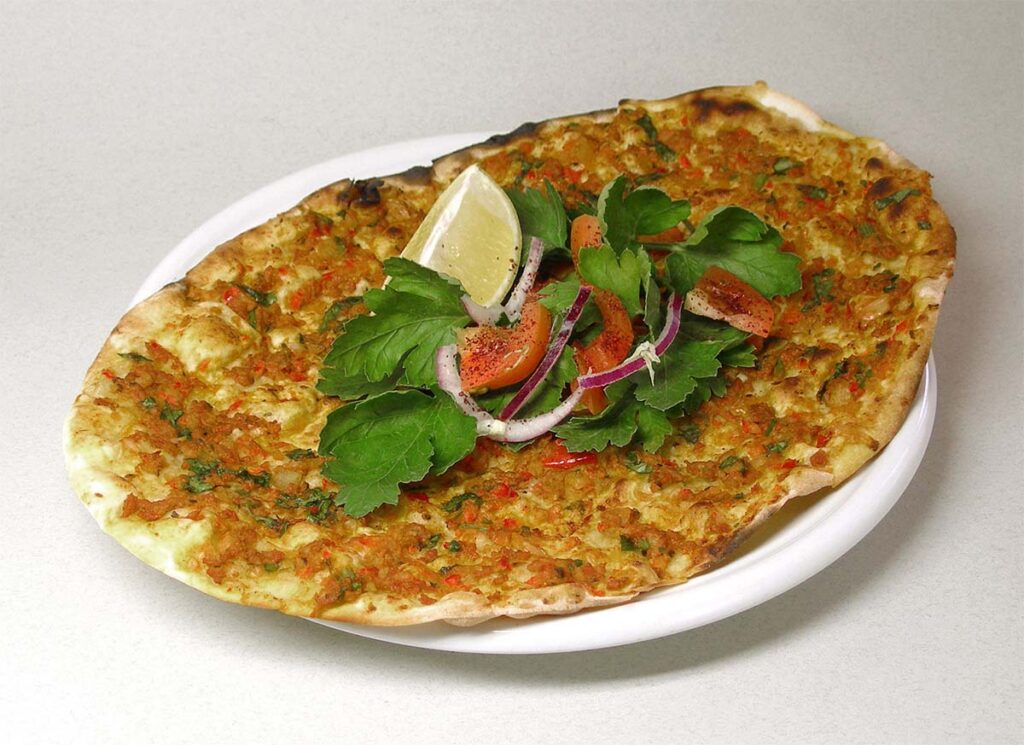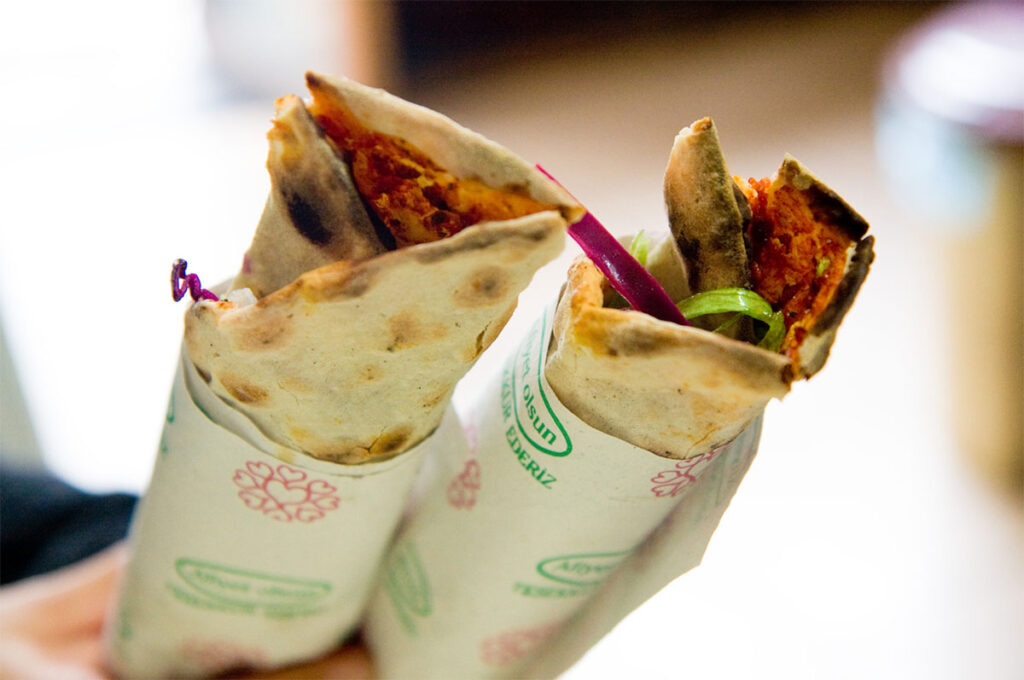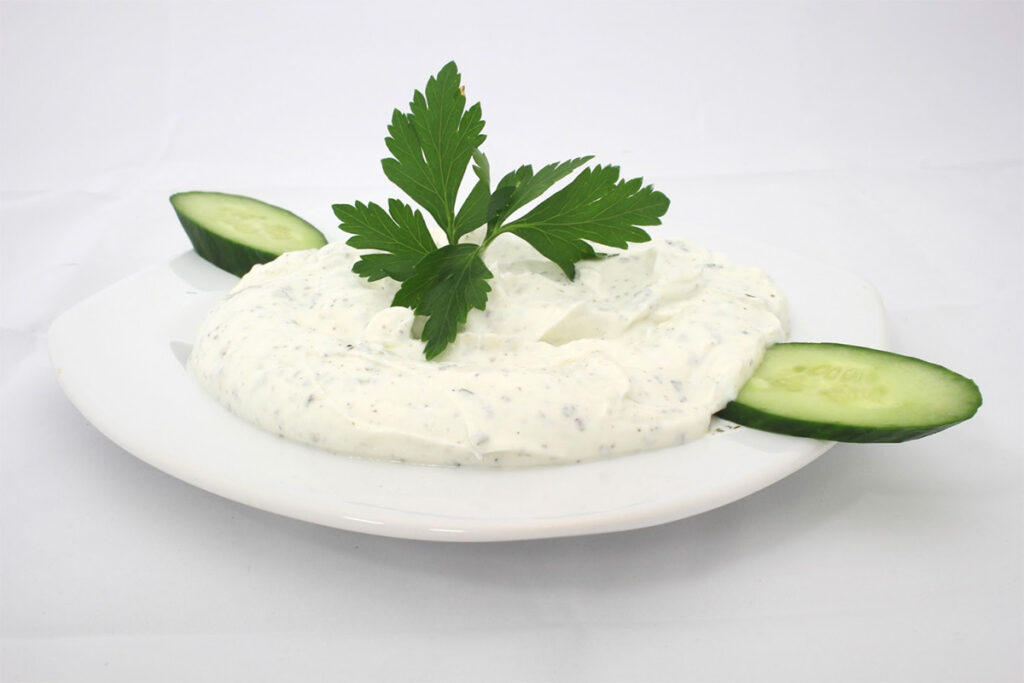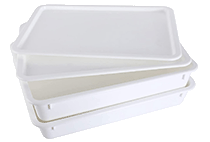Are you looking for a new pizza style? Perhaps with a bright, fresh flavor and spicy kick? Well, look no further. We want to introduce you to our friend, Turkish lahmacun pizza.
One of our favorite cuisines in the world is Turkish! Whether that’s döner durum, manti, or baklava, we’re always trying to dig deeper into their food culture. Not to mention, Istanbul is hands down the best city we’ve ever traveled to – seriously, check out that skyline alone! If only we had a travel or photo blog.
Key Takeaways:
- Turkish lahmacun pizza is a thin, crispy flatbread topped with ground lamb, vegetables, and spices. It has a bright, fresh flavor profile and spicy kick from peppers like Aleppo. It’s quite different from regular pizza in its thinner crust and lack of cheese.
- To make lahmacun at home, the dough does not contain yeast and is rolled very thin. The lamb filling is blended with onions, garlic, peppers and spices. It’s spread thinly on the dough and baked in a Dutch oven to mimic a traditional tandoor oven.
- The best way to experience authentic lahmacun is to visit Turkey, where it originated as a popular street food. However, home cooks can replicate the crispy texture and flavors by baking thin dough topped with the lamb mixture in a Dutch oven with the lid on.
Table of Contents

What Exactly is Turkish Lahmacun Pizza?
First, this pizza is called Turkish pizza, but it actually has its own name, lahmacun. This unique pizza is a popular street food in Turkey, but it can also be found in more upscale places too. Lahmacun is not quite a pizza but not really a flatbread or wrap, either.
It’s really its own thing. It is delightfully made with ground lamb and spices mashed together into a paste and then spread on a very thin dough and baked to a crisp. Thin crust pizza anyone!? Lahmacun is then served with fresh herbs and a squeeze of lemon, which perfectly contrasts the spiciness.
How Is It Different From Other Pizzas?

Lahmacun really seems like pizza, though; it’s round, has toppings, and comes from the region that pizza is thought to originally be from, where soldiers first threw dough against a hot rock and ate it with herbs. But while lahmacun may have some shared history with classic pizza, it really is a thing all its own.
Turkish lahmacun is different from pizza in a couple of ways. First and foremost, the crust is super thin, It’s thinner than a thin-crust pizza but thicker than a tortilla. Kind of like a Thai Pizza. The dough for the base is made with semolina flour and is drier and crispier than regular pizza dough.
It is usually made only with lamb, and although some are using beef, most agree that lamb is what makes it special. Lahmacun is served with fresh parsley sprinkled on top and a wedge of lemon to squeeze some acid to complement the spicy meat paste.
It’s an extremely popular street food and is often rolled up like a burrito for easy eating.
Another thing that sets lahmacun apart from a tasty Italian pizza is the cheese; there is no cheese on lahmacun, making it a great pizza alternative for those that are dairy-free.
Lahmacun vs. Pide
Turkish Lahmacun and Turkish Pide are both popular dishes in Turkish cuisine, but they have distinct differences in terms of their preparation, presentation, and flavors. Lahmacun, as we’ve already seen is a thin and round dough topped with a mixture of minced meat (usually lamb or beef), vegetables, herbs, and spices.
The dough is typically rolled out thinly and then baked in a very hot oven, resulting in a crispy base. Lahmacun is often served with fresh lemon wedges and lettuce, allowing diners to roll it up and eat it like a wrap.
On the other hand, Turkish pide is a boat-shaped bread that is thicker and softer compared to lahmacun. The dough is typically leavened, giving it a fluffy texture. Pide is usually topped with various ingredients such as cheese, meat (such as minced lamb or beef), vegetables, and herbs.
The toppings are spread generously over the dough, and the bread is baked in a hot oven until golden and bubbly. Pide is commonly served sliced into rectangular or triangular pieces, making it perfect for sharing among a group of people.
In summary, while lahmacun and pide share some similarities as popular Turkish dishes, their differences lie in the thickness and texture of the dough, the toppings used, and the way they are presented. Lahmacun is a thin, crispy dough topped with minced meat and vegetables, often rolled up and enjoyed as a wrap, while pide is a thicker, softer bread with various toppings, typically served sliced for communal enjoyment.
Where to Find Lahmacun Pizza?
You aren’t going to find lahmacun at your local pizzeria. Instead, you will need to go to a specialty place like a Turkish restaurant. We have also seen them on some menus at Greek, Lebanese, and general Middle Eastern fusion restaurants.
But if you live in a smaller or less culturally diverse area, you might have to take a trip to a bigger city to find lahmacun. If you really want an authentic experience, then a plane ticket and passport may be on the menu to travel to Turkey to try it in person. We know it’s definitely on our list of places to go back to.
You can also try your hand at making lahmacun at home. And we can help you with a recipe and some tips to make homemade Turkish lahmacun pizza at your place.
Just like Sicilian vs. Neapolitan vs. Roman pizzas, you gots to go to the source.
How to Make Turkish Lahmacun Pizza at Home

You will need a few things to get started:
- Rolling pin
- Blender or food processor
- Large Dutch oven
Ingredient list for lahmacun:
- 2 onions
- 6 cloves of garlic
- 3 Bell peppers (1 red & 2 green) cored and chopped
- 1 pound of ground lamb
- 2 Tablespoons tomato paste
- 2 Roma tomatoes
- 2 cups fresh Italian parsley
- 1 teaspoon black pepper
- 1 teaspoon Aleppo pepper
- 1 teaspoon cumin
- 1 teaspoon salt
- ¼ cup of extra virgin olive oil
For the dough.
- 2 cups of water
- 5 cups of flour
- 1 teaspoon salt
The first thing you probably notice is the dough doesn’t have any yeast that because it is going to be flat and doesn’t need a rise, but it will need a rest. Start by combining the dough ingredients and mix until you have a dough. Divided into twelve pieces, and let them rest for thirty minutes to an hour.
Next, add everything but the lamb into a blender or food processor. In a large bowl, mix the lamb and the other ingredients from the blender.
Mix well. Use a silicon spoon or your hands covered with food prep cooking gloves or maybe some huge heat-resistant gloves.
Note: We don’t recommend using bare hands because of the Aleppo pepper.
When it’s all mixed, then put it in the refrigerator for at least an hour but not longer than 24 hours.
Place the Dutch oven on the burner at medium heat with the lid on. Roll out the dough ball to be slightly smaller than your Dutch oven. Place the thin crust in the Dutch oven, spread the lamb mixture, and cover with the lid cook for 6-8 minutes until the lamb mixture is cooked.
Serve with a sprinkle of fresh parsley, lemon wedges, and diced tomatoes.
Why Make Lahmacun in a Dutch Oven

The reason we make lahmacun in a Dutch oven and not the pizza oven or conventional oven is that traditionally Middle Eastern flatbreads like lahmacun are made in a tandoor oven which helps give it the crispy texture.
If you don’t have a Dutch oven, you can use a nonstick pan with a lid. We haven’t tried it with our pizza oven yet. But we will let you know how it turns out when we get around to it.
If you are worried about the raw meat, don’t be. The mixture is spread very thin on the base, so it cooks quite quickly. Unlike regular pizza, where the toppings should be cooked before added, with lahmacun, the toppings are supposed to be flavorful but spread thin. And because there is no cheese, the toppings cook quickly.
Of course, you can mix traditional style with whatever you like and make your lahmacun in the conventional oven. You can even use homemade pizza dough rolled out thin. The lahmacun should be crispy, but the real star is the lamb mixture that is smoky and spicy.
If you can’t fathom eating this without cheese, you can add some Feta, which turns lahmacun into peymacun (lahmacun with cheese).
We recently learned about another version called cevizli which adds ground walnuts to the lamb mixture. We haven’t tried it, but it seems like the walnuts would add some interesting texture. If you are vegetarian, you could make this without lamb and just use ground walnuts, too.

When we had lahmacun at a local restaurant here in Minnesota, they served it with sumac spiced onions and a white yogurt dip called cacik. We thought it was tzatziki, because it’s similar. But cacik is different because tzatziki calls for dill, and cacik calls for mint. But both are fresh yogurty cucumber dips. (Special thanks to our server, who explained the difference to us.) Totally makes sense.
We think you will like Turkish lahmacun pizza. While not exactly pizza, it’s pizza adjacent, and that is all we needed to know before giving it a try; we are so glad we did, and we think you will be too.
Frequently Asked Questions
What is the difference between lahmacun and pide?
Lahmacun has a very thin, crispy dough topped with minced meat and vegetables, often eaten rolled up. Pide has a thicker, softer dough topped generously with various ingredients and usually served sliced.
Can I use pizza dough to make lahmacun?
Yes, you can use homemade pizza dough rolled very thin in place of the traditional lahmacun dough. The result may not be as crispy but it will still be tasty.
Is the raw lamb safe to eat?
Yes, because the lamb mixture is spread very thinly on the dough, it cooks quickly when baked in the Dutch oven. This cooking method ensures it’s fully cooked.
Can I add cheese to lahmacun?
While authentic lahmacun does not contain cheese, you can make a version called peymacun by adding feta cheese to the topping.
Where can I find lahmacun if I don’t live near a Turkish restaurant?
You may be able to find lahmacun at other Middle Eastern or Mediterranean restaurants. Otherwise, your best option is to make it at home following an authentic recipe.
Can I use ground beef instead of lamb?
Yes, some versions use beef. However, lamb is considered more traditional and authentic since it’s commonly used in Turkey.
Have you tried Turkish lahmacun pizza? Or have you been to Turkey before?













